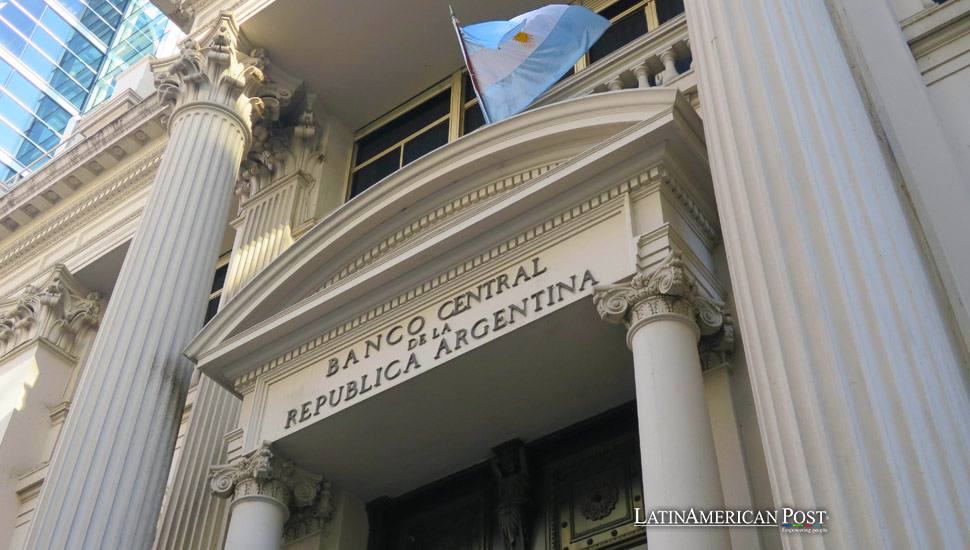Argentine Central Bank Lowers Reference Rate to 70%

Argentina’s Central Bank cuts its reference rate from 80% to 70%, signaling a strategic shift amid an inflation slowdown. This move comes as President Milei’s administration navigates the economic legacy of high inflation and fiscal challenges, which is impacting broader Latin American economic dynamics.
In a notable move reflecting Argentina’s complex economic landscape, the Central Bank of the Republic of Argentina (BCRA) has reduced its benchmark interest rate from 80% to 70%. This decision is part of a broader strategy under President Javier Milei’s new administration, aiming to address the persistent inflationary pressures that have beleaguered the nation.
Rate Adjustments Under Milei’s Administration
The BCRA’s action marks the third rate adjustment since Milei’s inauguration in December, cumulatively slashing the rate from 133% to 70%. This significant monetary policy shift occurs as Argentina grapples with an inflation rate that, despite slowing to 13.2% monthly in February, escalated to an annual high of 276.2%.
The BCRA’s communication highlights a “pronounced deceleration” in inflation following an initial price realignment in December 2023, which included a 100% currency devaluation. This inflationary easing, however, carries the burden of statistical drag, affecting average monthly figures.
The Central Bank underscores the impending importance of core inflation metrics, excluding regulated or seasonal prices. This focus shift anticipates the impact of forthcoming regulated service tariff adjustments, which are crucial for evaluating the underlying inflation trends.
Amidst these changes, the BCRA continues implementing a policy of negative, accurate interest rates, a strategic maneuver to reduce monetary liabilities and improve its financial health. Recent decisions include a ten basis-point cut in the passive repo rate, reflecting a proactive approach to managing the economic climate and liquidity conditions.
Facilitating Foreign Exchange Access
The BCRA’s policy adaptations extend to easing foreign exchange market access, mainly benefiting small and medium-sized enterprises (SMEs) by allowing 30-day payment terms for imports under stringent currency controls. Additionally, the bank has facilitated upfront payments for capital goods imports, further integrating Argentine businesses into the global market.
Terminating a swap arrangement with the Bank for International Settlements (BIS) reflects another strategic financial decision, saving over $10 million annually and streamlining the BCRA’s operational framework. This move, coupled with the normalization of liquidity management through banking reserve requirements for money market funds, signifies a meticulous approach to monetary regulation and stability.
In its quest for monetary equilibrium, the BCRA highlights improvements in its balance sheet and the contraction of the economic base, serving as a crucial anchor for tempering inflation. The bank’s disciplined approach, refraining from printing money to cover fiscal deficits and issuing ‘Bopreal’ bonds against foreign currency debts, underscores a commitment to monetary stability and inflation control.
The BCRA also emphasizes bolstering international reserves and the narrowing gap between official and parallel dollar rates, signaling a positive shift in currency stability and devaluation expectations. These measures reflect a broader strategy to restore economic balance and confidence in the Argentine peso.
President Milei’s administration, confronting the challenging economic legacy of high inflation, central bank insolvency, and elevated poverty from Alberto Fernández’s tenure (2019-2023), views these monetary policy adjustments as essential to economic revitalization.
Latin American Relevance and Collaboration
Argentina’s monetary policy trajectory has implications beyond its borders, resonating across Latin America, where several countries face similar economic challenges. The region, known for its financial volatility and recurring inflationary cycles, watches closely as Argentina navigates its fiscal and monetary pathways.
Countries like Venezuela, with a hyperinflationary history, and Brazil, with its battles against inflation and fiscal deficits, find relevance in Argentina’s policy maneuvers. The BCRA’s actions may offer insights or cautionary tales for neighboring economies striving for financial stability and sustainable growth.
Moreover, Argentina’s monetary strategy, characterized by rate adjustments and regulatory reforms, could influence regional economic collaboration and policy discourse. As Latin American economies seek to fortify against global economic headwinds, Argentina’s experience may provide valuable lessons in balancing monetary rigor with growth objectives.
Also read: Argentina’s CGT Considers Strike Against Government Austerity
The BCRA’s recent rate cut and accompanying monetary policy adjustments represent a critical juncture in Argentina’s economic management, with broader implications for Latin America. As the region contends with fluctuating economic conditions, Argentina’s endeavors to stabilize its economy and curb inflation offer a compelling narrative of resilience and strategic recalibration, essential for fostering regional financial stability and growth.





